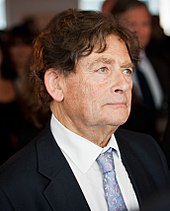Lawson Boom
[1] However, before long inflation began to rise substantially, and as a result of his interest rate cuts, house prices rose by 20%.
[1] Critics of Lawson assert that a combination of the abandonment of monetarism, the adoption of a de facto exchange-rate target of 2.95 deutschmarks to the pound, and excessive fiscal laxity (in particular the 1988 budget) unleashed an inflationary spiral.
In 1990, Shadow Chancellor of the Exchequer John Smith referred to the period as the "Lawson boom" in a House of Commons debate, in which he said The Greenwell Montagu gilt-edged research paper, UK inflation in the 1990s, highlights the tendency of British Governments "to over-expand demand and to preside over periods of over-rapid expansion, mistaking them for the beginning of the catching up of British economic performance with those of our competitors and the beginning of a virtuous circle."
The "dash for growth" had failed to save the Conservative government from electoral defeat at the hands of Labour in the 1964 general election, and was followed by a difficult period for the economy (during which unemployment nearly doubled) in the second half of the 1960s.
However, the economy fell into its third recession in less than 20 years, with unemployment coming close to 3 million by the end of 1992, even though this time the Conservatives managed to gain re-election.
